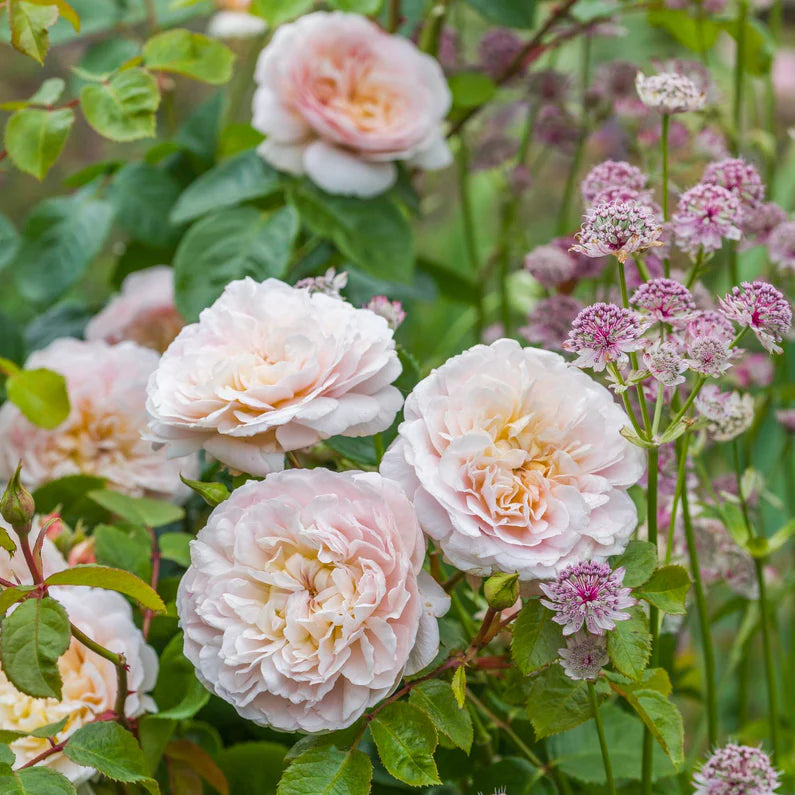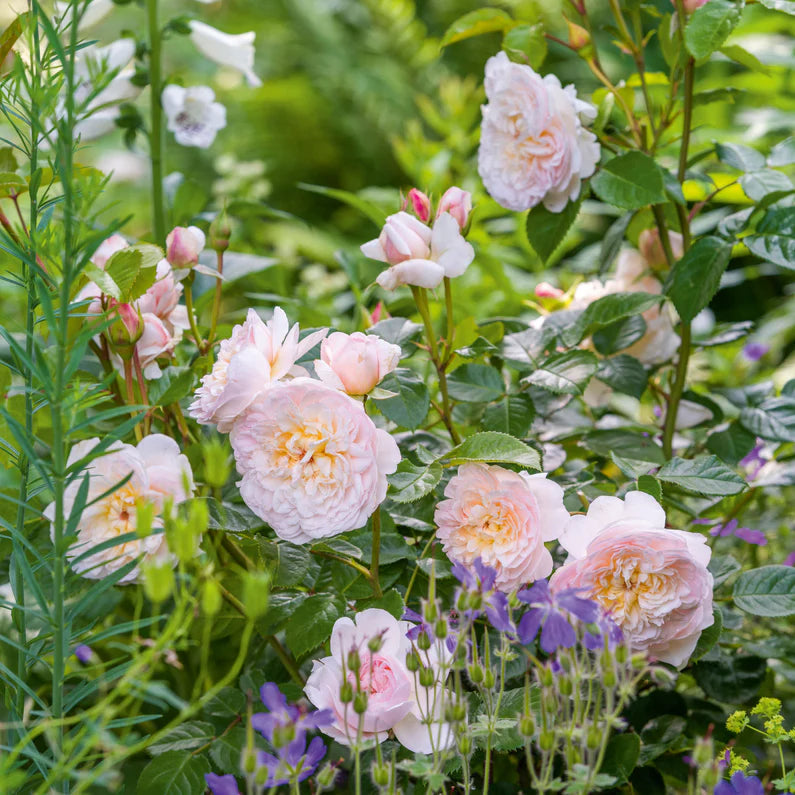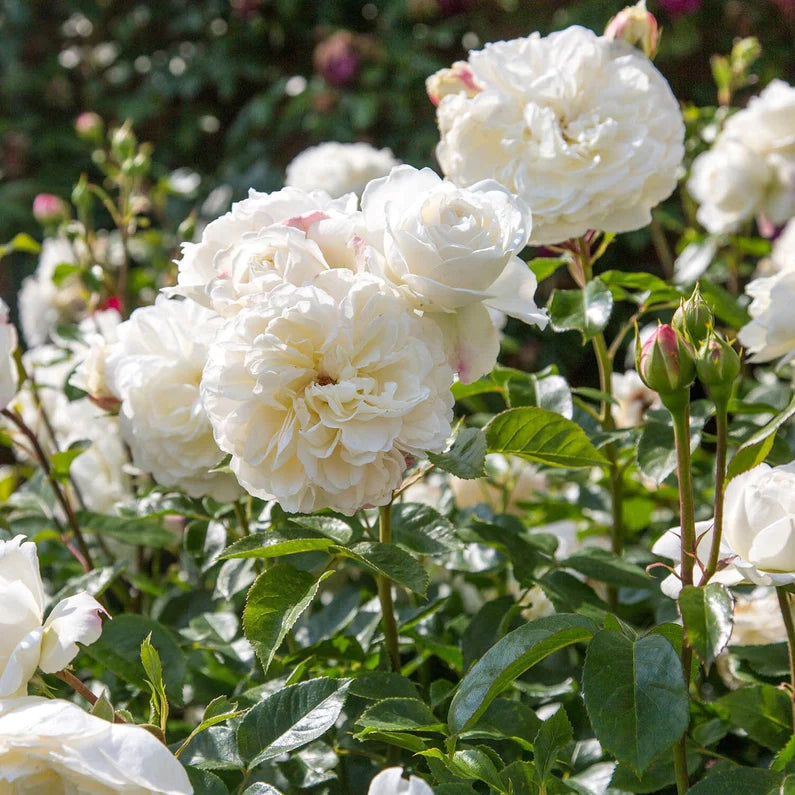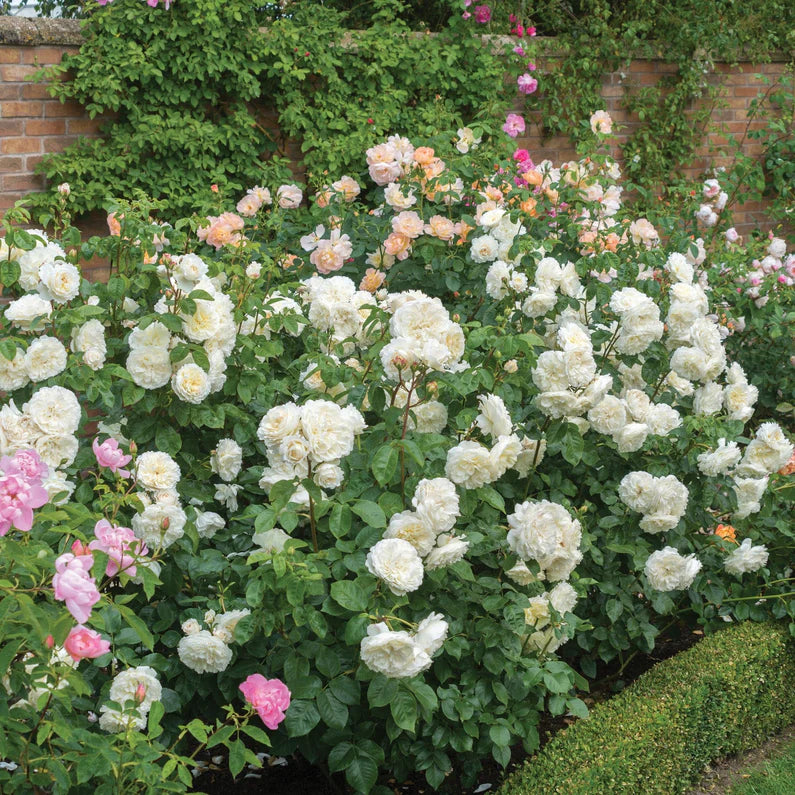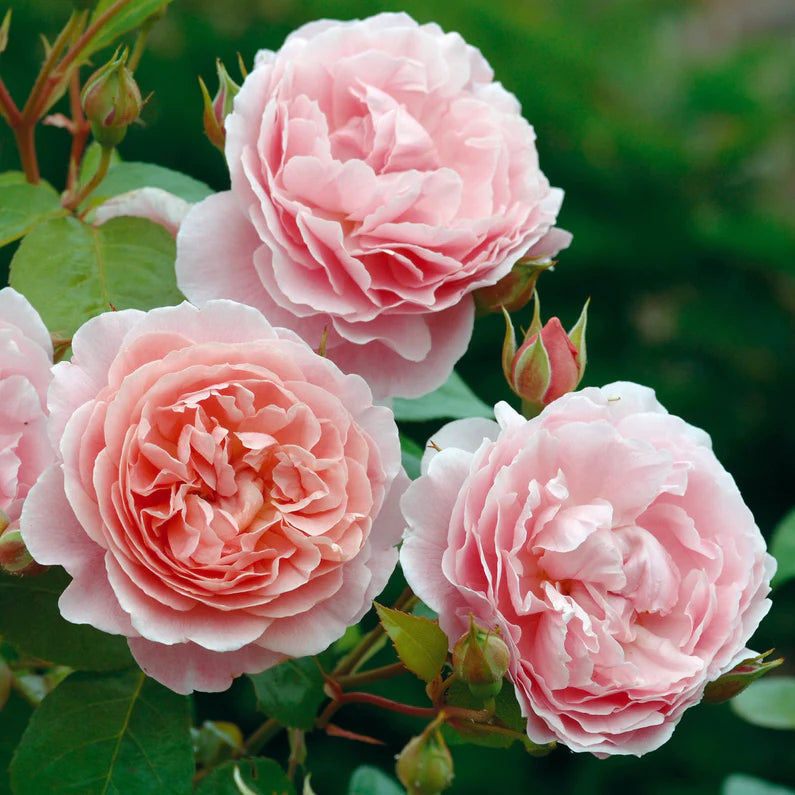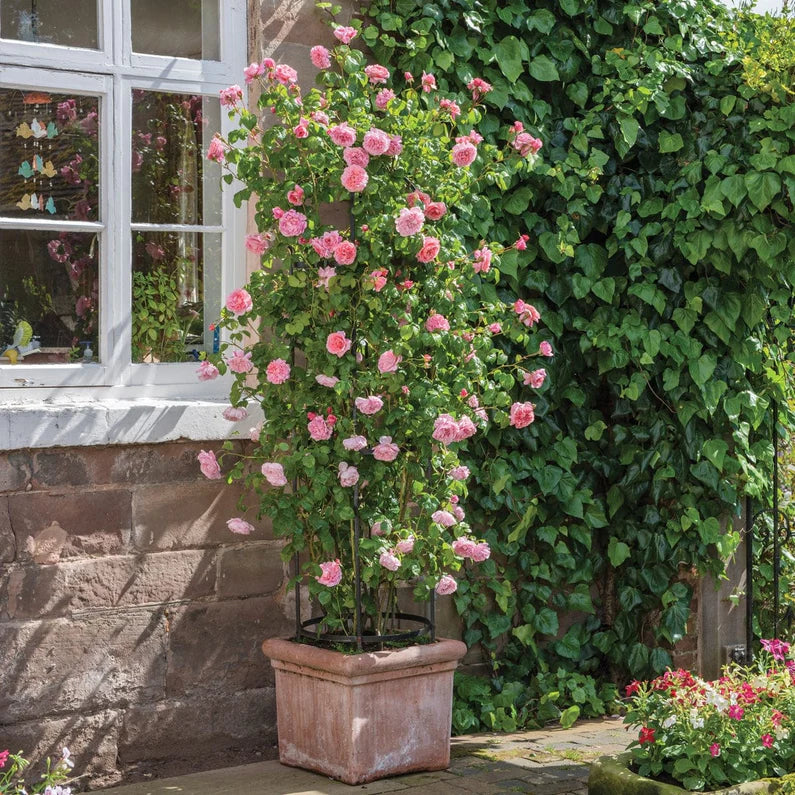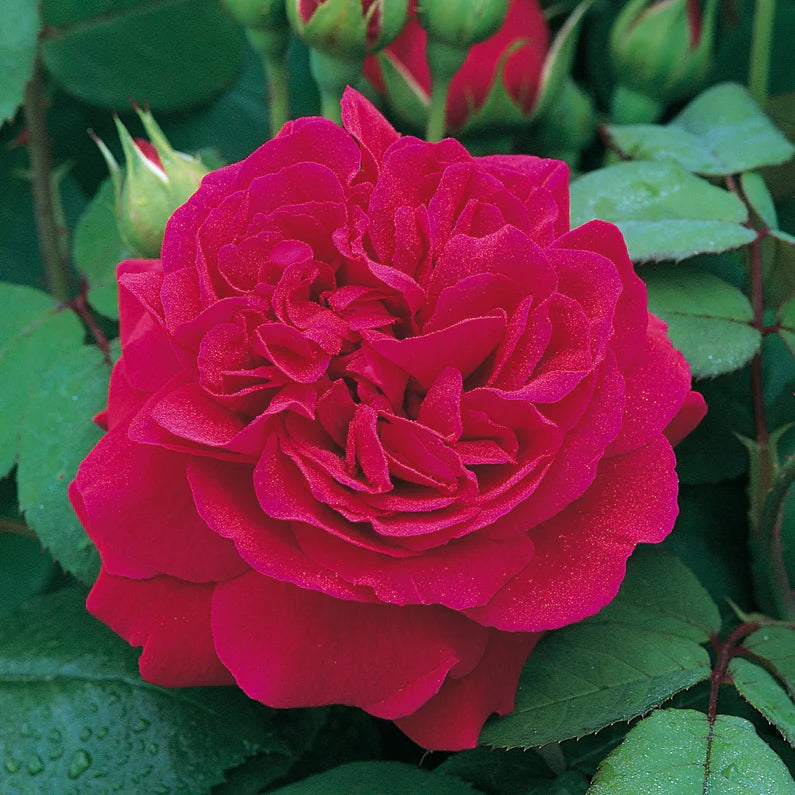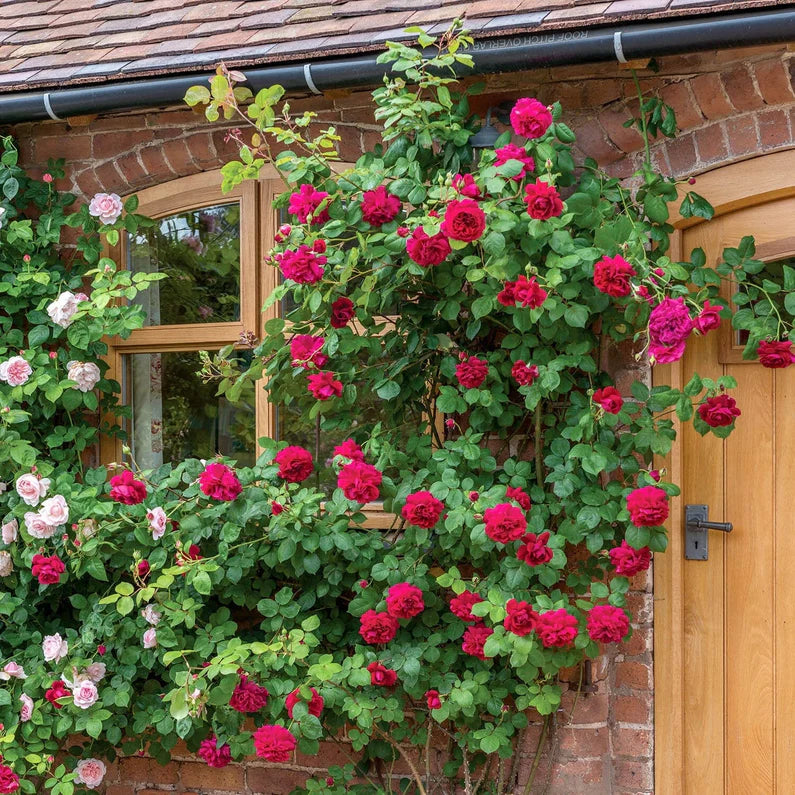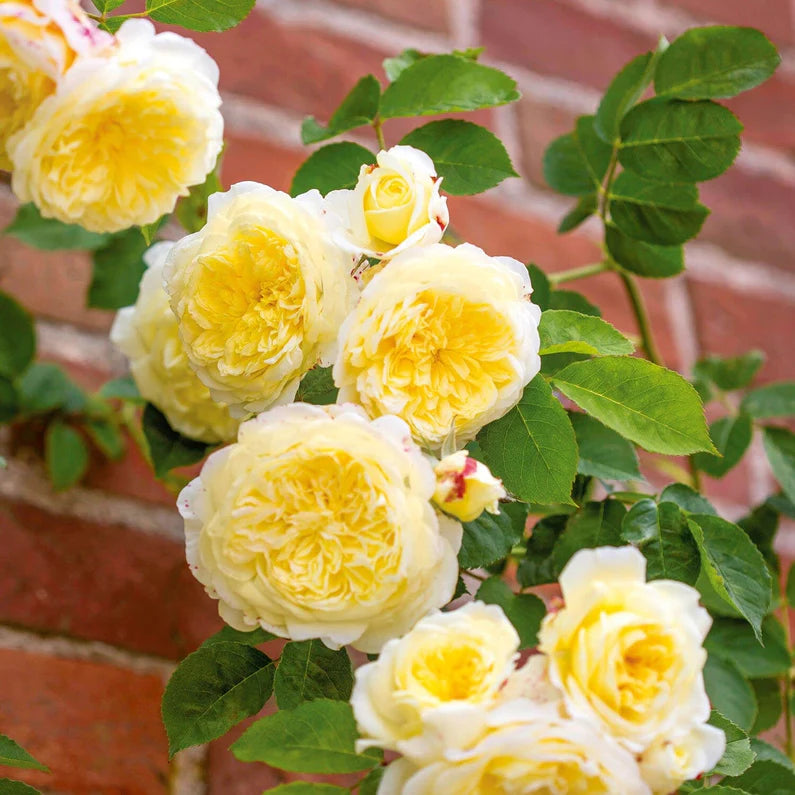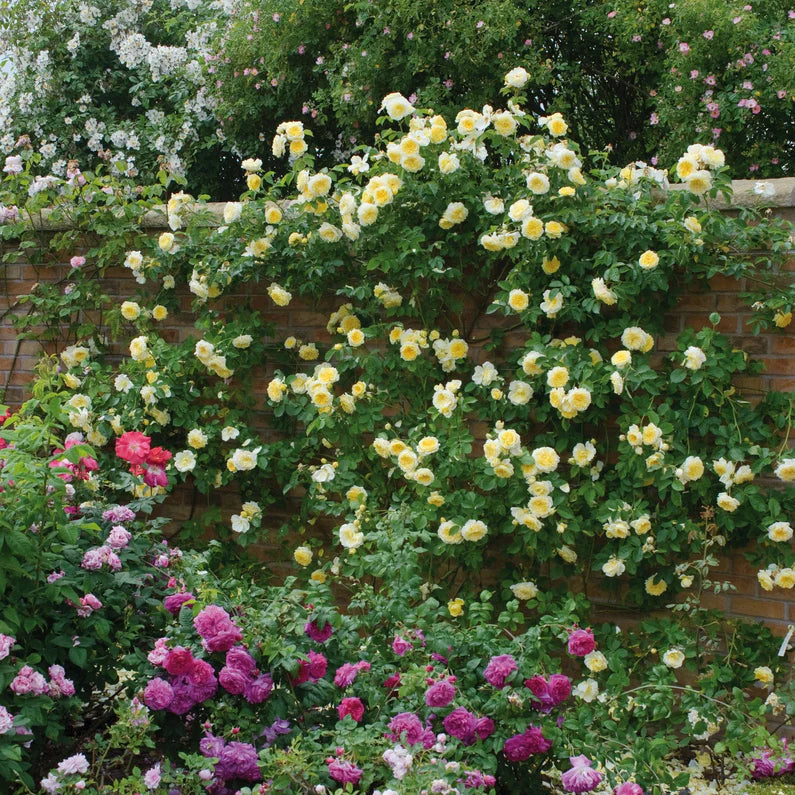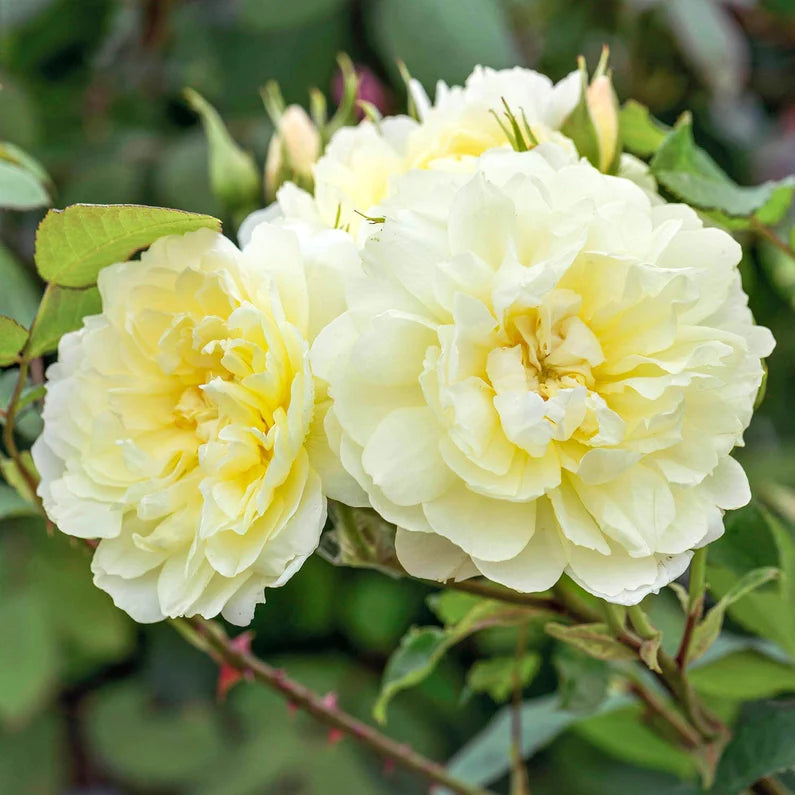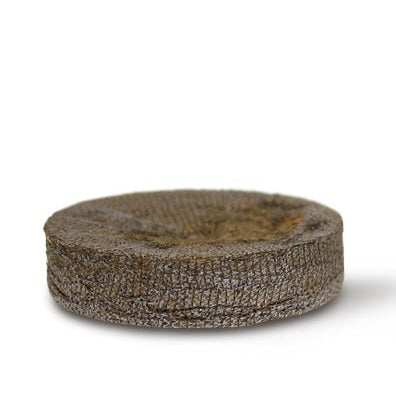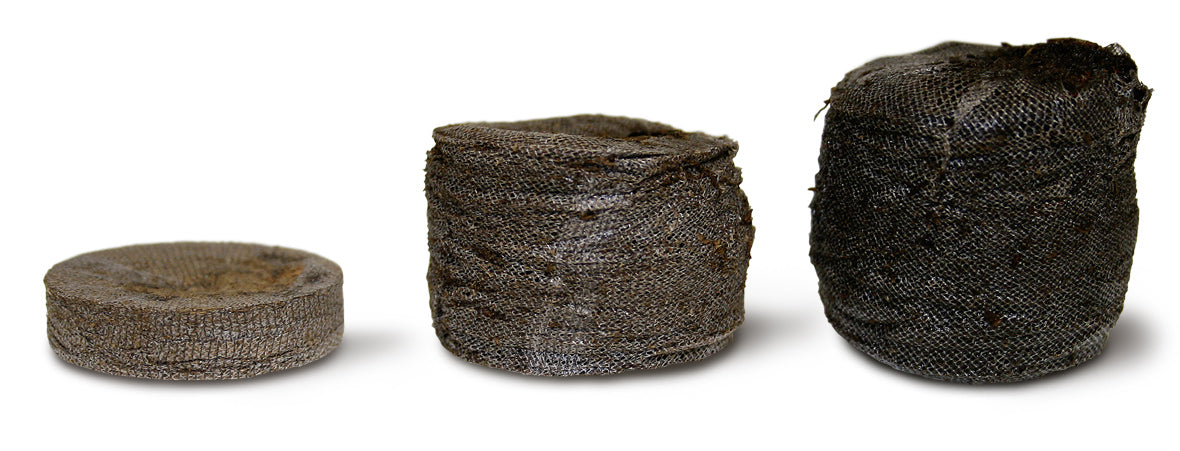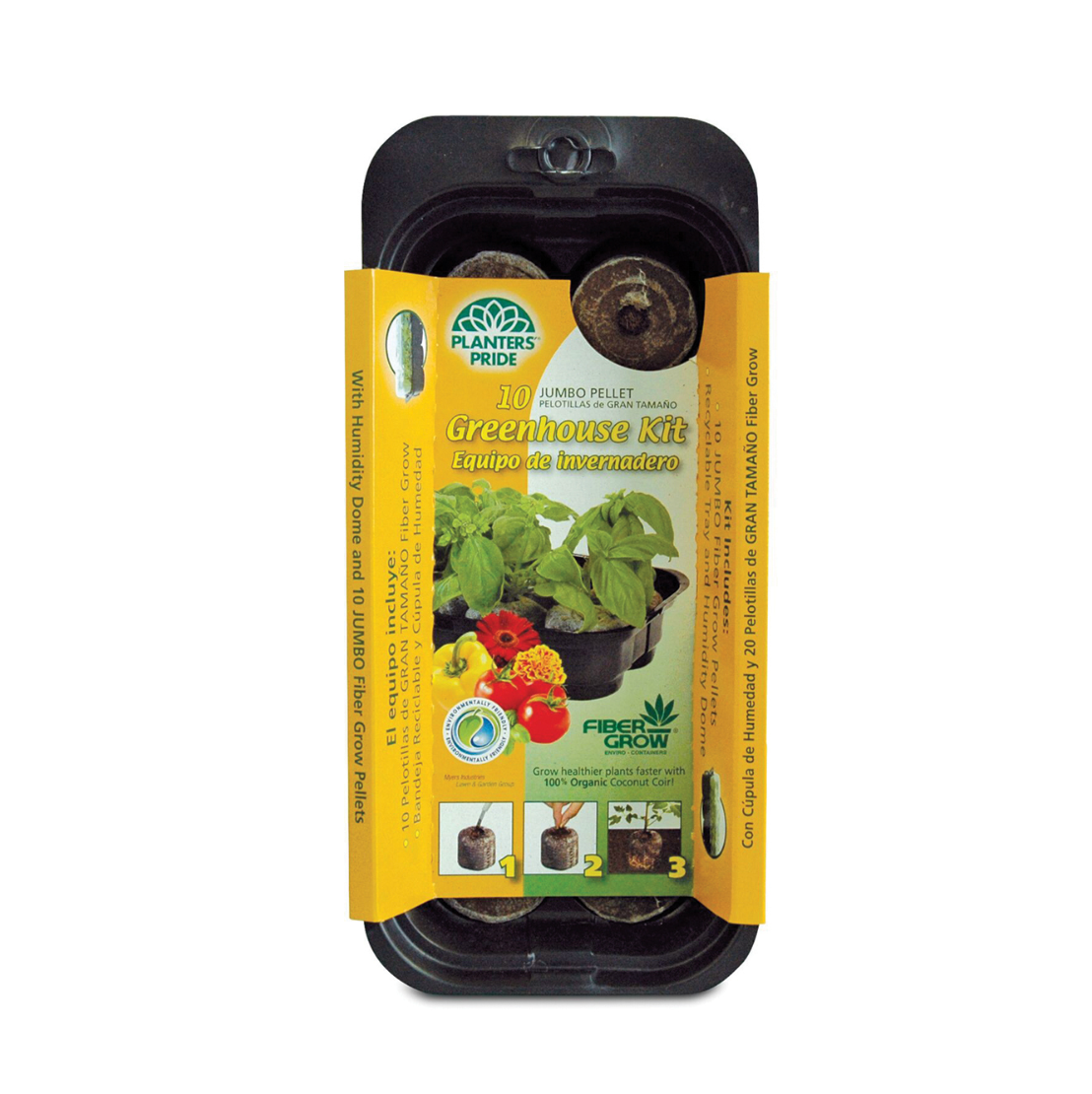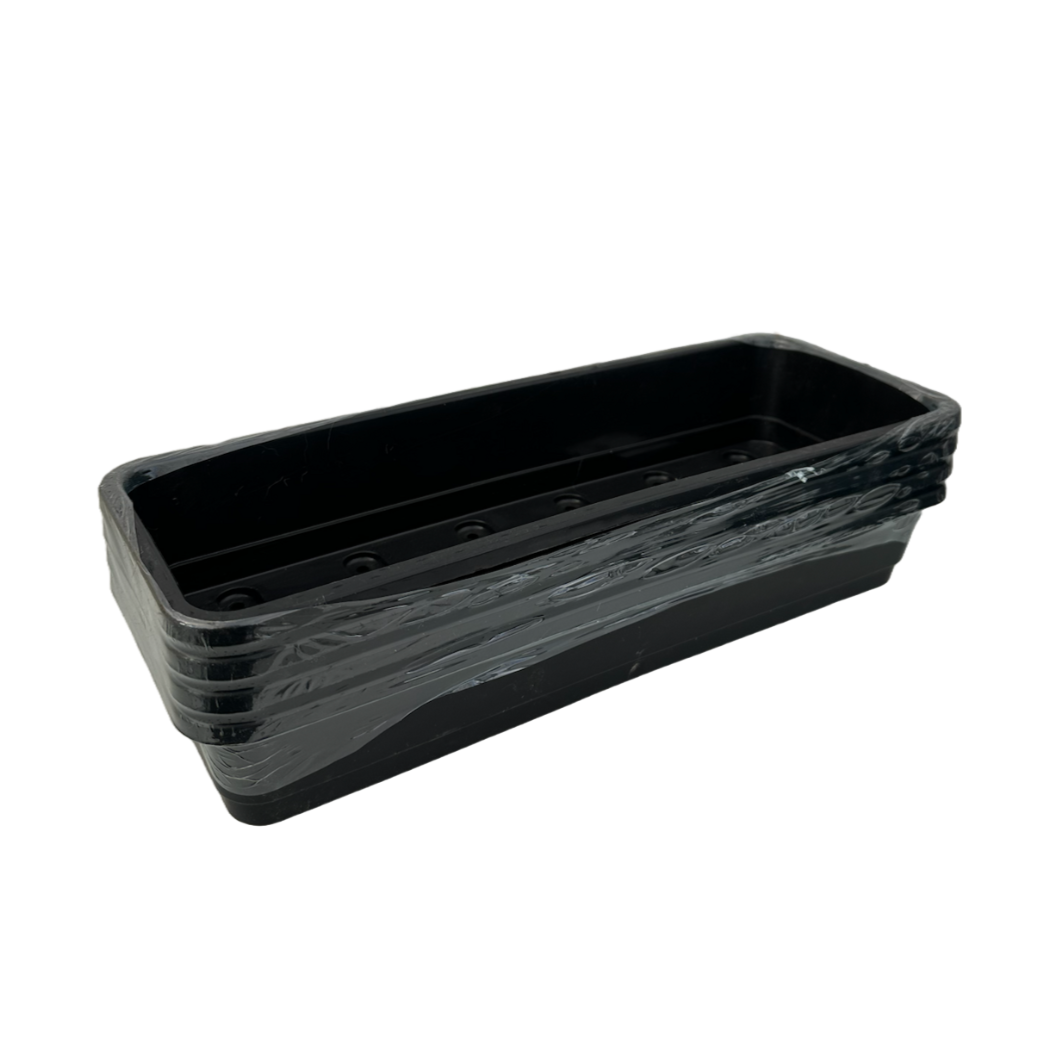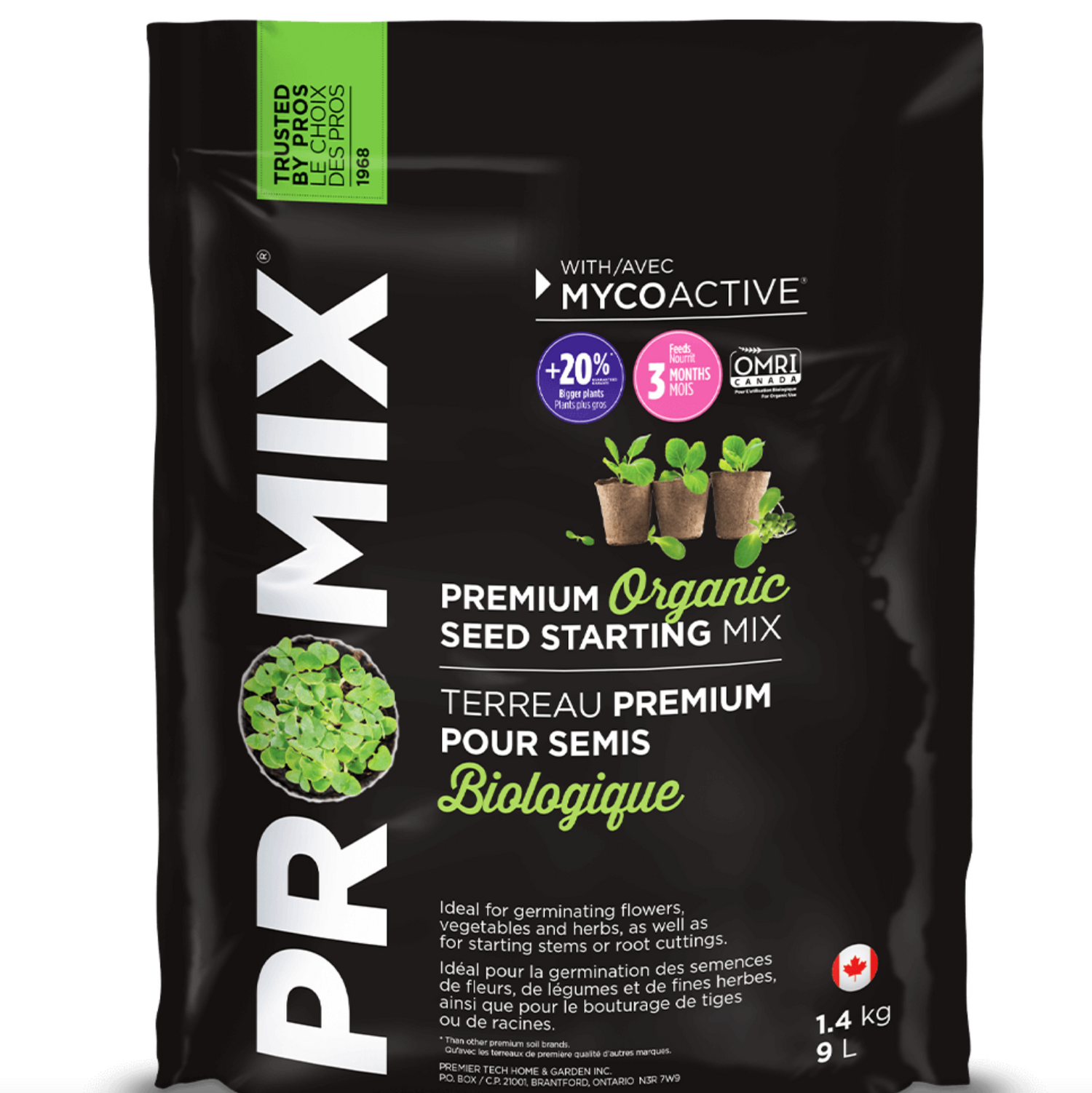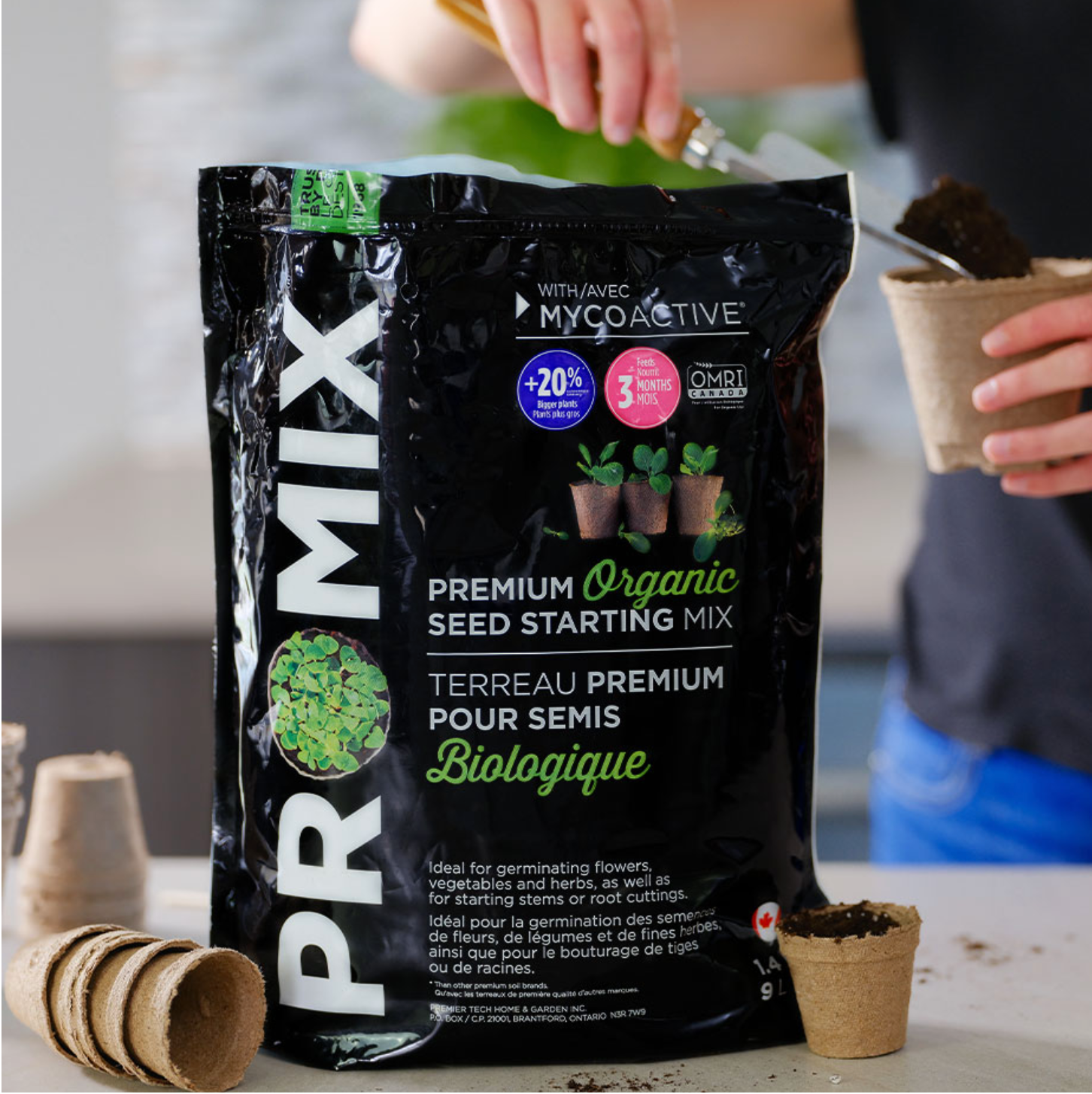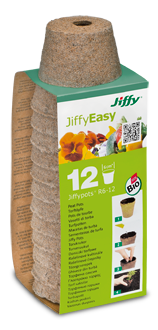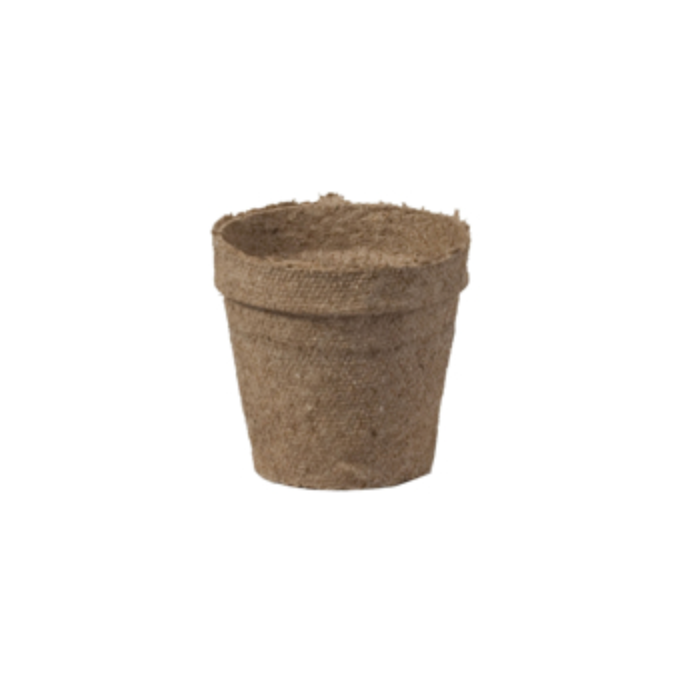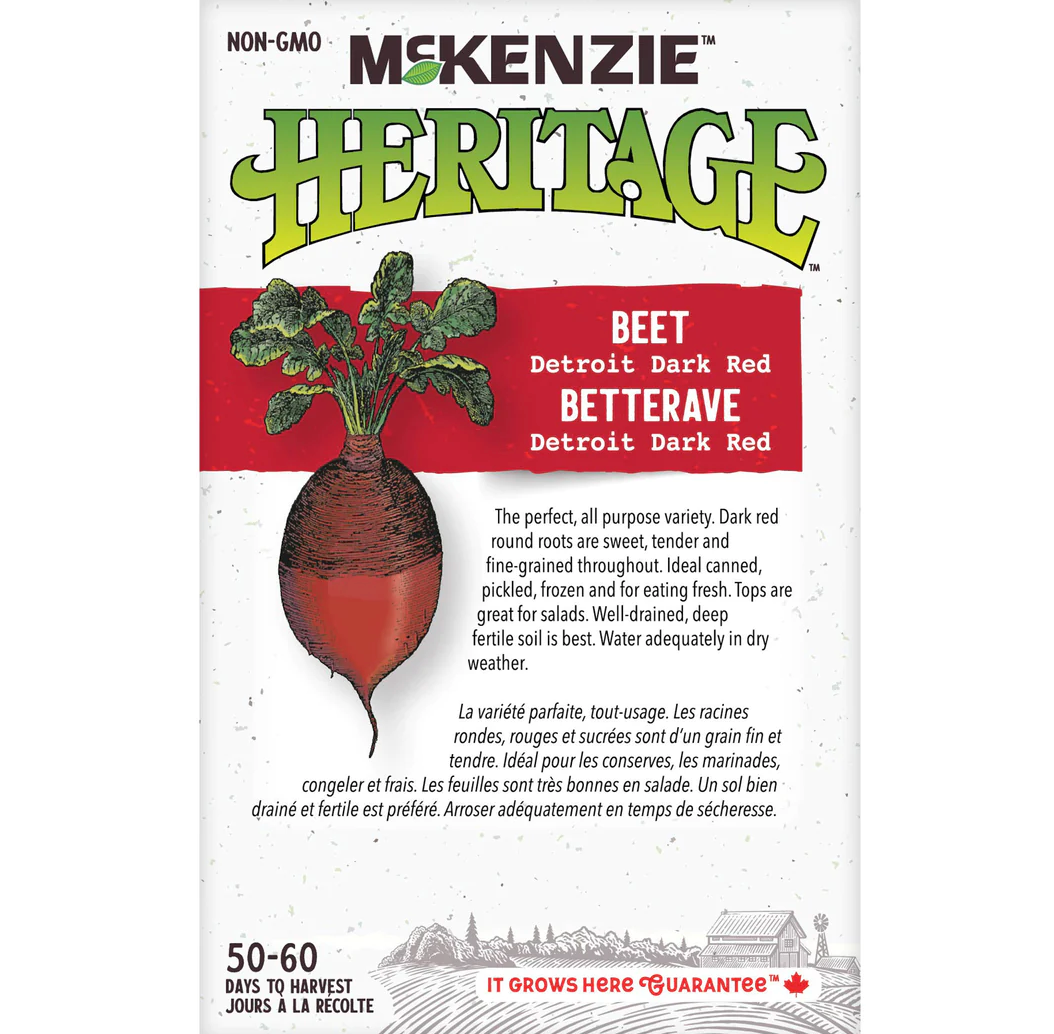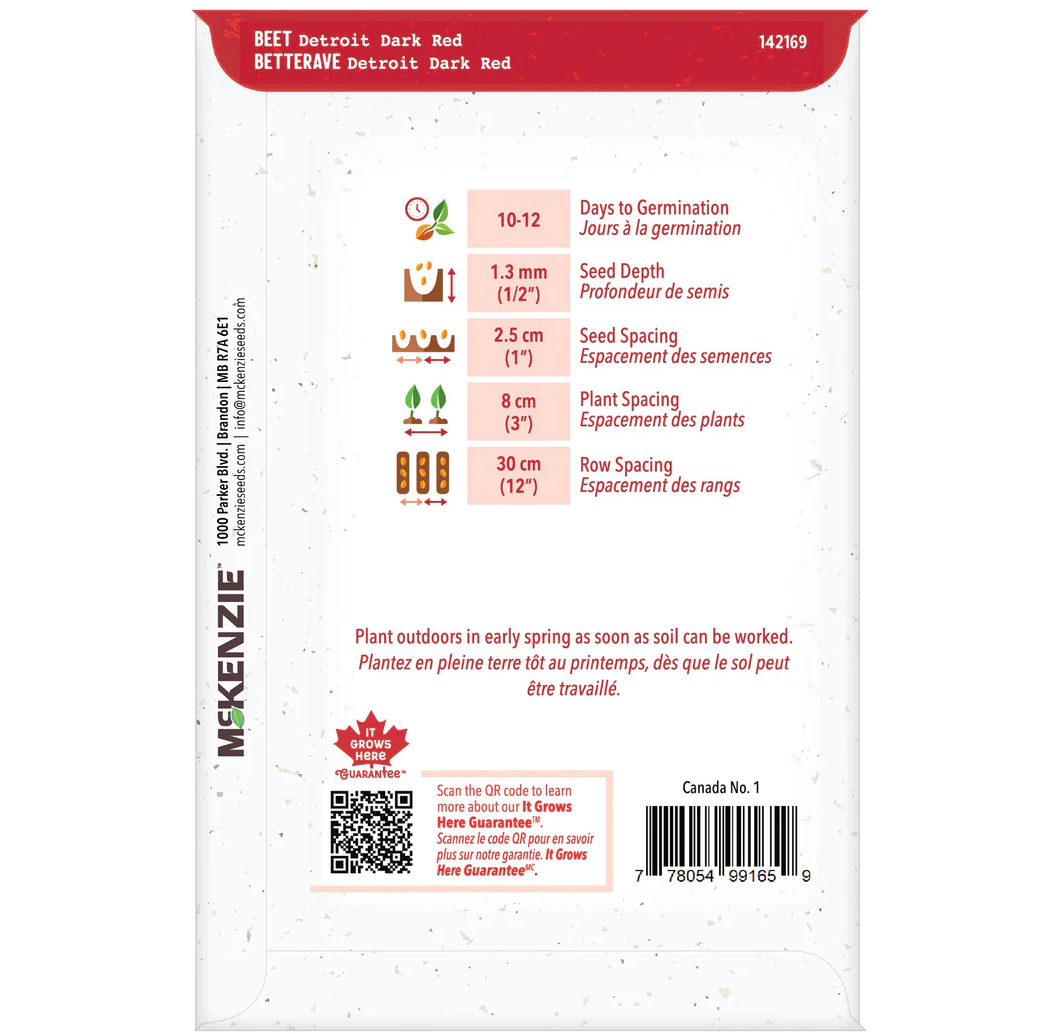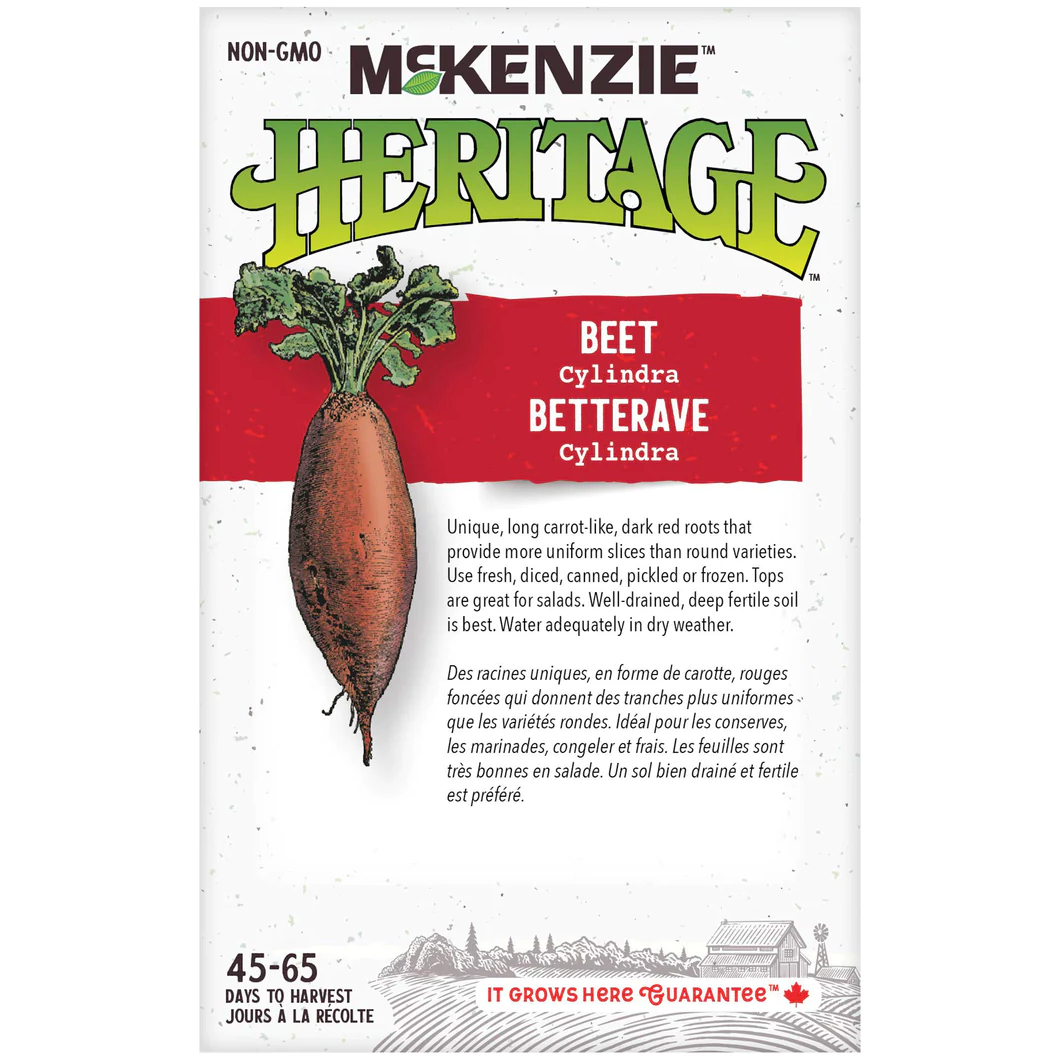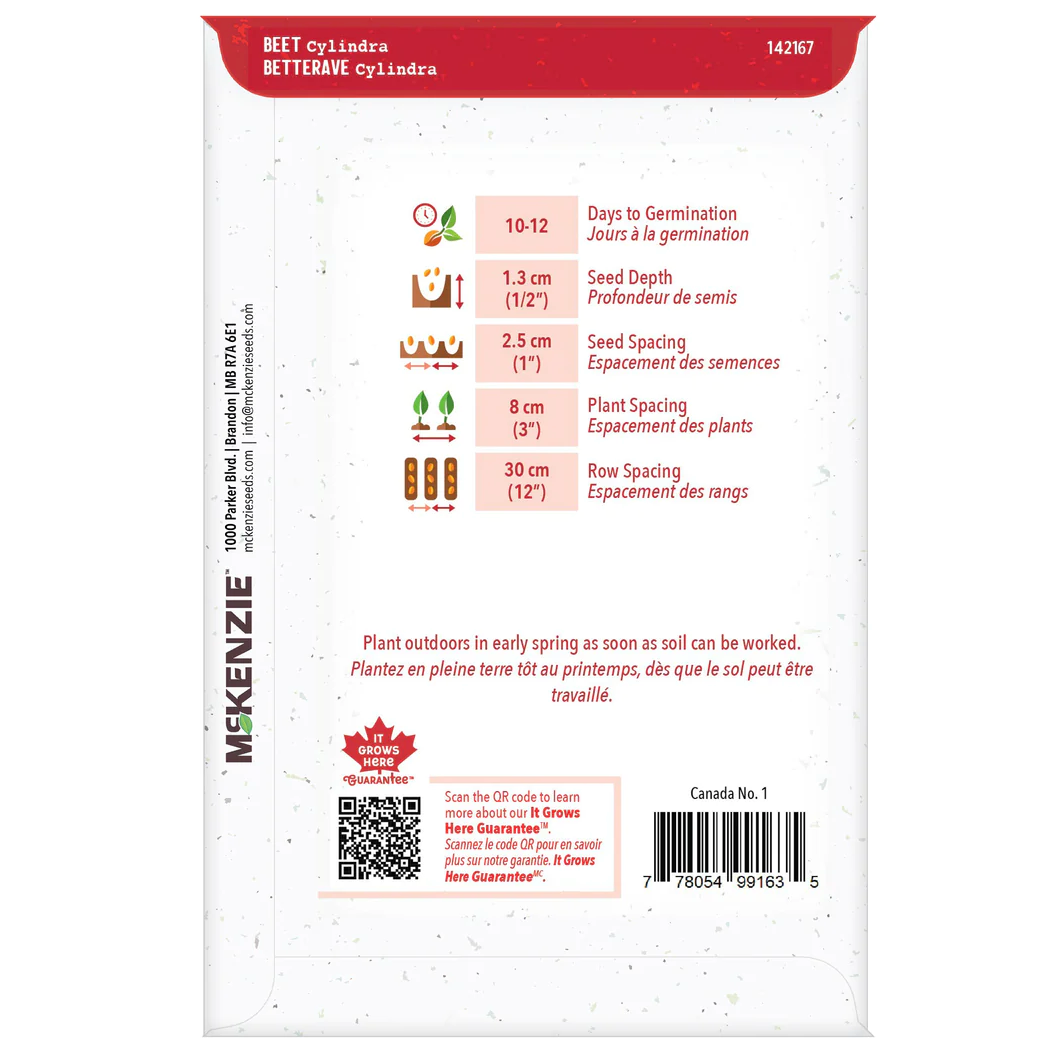1982 products
1982 products
Sort by:
Newest Products
An exceptionally beautiful rose with distinctive neat, flat blooms. Each bloom is a lovely soft pink, the smaller central petals deepening to rich apricot and surrounding deep-set stamens. The strong Tea scent becomes more Old Rose, with delicious hints of lemon and grapefruit. It forms a bushy shrub with strong, healthy, upright growth. Named for the Brontë Society to celebrate the bicentenary of the novelist’s birth.
David Austin Roses were not developed for Zone 3. BUT it is possible to have success here in Manitoba by following a few key tips.
Choose a location that is not in line with strong north winds
Plant the crown (this is where the roots end and the woody shrub begins) of your rose 6”-12” below the surface of the soil. As your shrub will be in full leaf at time of purchase clean off leaves that will get buried.
In the fall you will need to cover with a deep layer of mulch. Wood mulch, straw, leaves or a combination of all. Use a burlap tarp (Not Plastic) to cover and hold down with rocks or stakes. This will ensure the mulch is not blown away. A full wheelbarrow or more per rose is not out of the question. Throughout the winter direct your snow clearing efforts to cover your roses as well. The more insulation the better.
Don’t remove the tarp and mulch until night temperatures are consistently hovering about zero to +3 with no threat of deep freeze, as we sometimes see in April.
We hope you enjoy growing your David Austin Rose.
Beautifully rounded flowers, with neatly placed petals making up perfect rosettes. The buds are lightly tinged with yellow but as the flowers open they become pure white. A vigorous shrub; its growth is bushy and upright, clothed in light green foliage, curving outwards in a most attractive manner. With its pure white flowers, this rose lives up to its name.
A wonderfully fragrant climber – its strong, warm myrrh fragrance has intense hints of citrus. The buds have attractive flashes of red, open to beautifully rounded, chalice-shaped blooms of pale apricot, eventually paling to cream. Named for one of the most beautiful private gardens in the country.
David Austin Roses were not developed for Zone 3. BUT it is possible to have success here in Manitoba by following a few key tips.
Choose a location that is not in line with strong north winds
Plant the crown (this is where the roots end and the woody shrub begins) of your rose 6”-12” below the surface of the soil. As your shrub will be in full leaf at time of purchase you can clean off leaves that will get buried if you like.
In the fall you will need to cover with a deep layer of mulch. Wood mulch, straw, leaves or a combination of all. Use a burlap tarp (Not Plastic) to cover and hold down with rocks or stakes. This will ensure the mulch is not blown away. A full wheelbarrow or more per rose is not out of the question. Throughout the winter direct your snow clearing efforts to cover your roses as well. The more insulation the better.
Don’t remove the tarp and mulch until night temperatures are consistently hovering about zero to +3 with no threat of deep freeze, as we sometimes see in April.
We hope you enjoy growing your David Austin Rose.
One of the largest-flowered English Roses, bearing rich yellow blooms in the form of giant cups. They have a strong Tea fragrance, developing wonderfully combined notes of Sauternes wine and strawberry. It forms a rounded shrub, with ample foliage – the flowers held beautifully poised on long, arching branches.
Bears medium-sized neat rosette blooms – tinged with orange at first, quickly becoming rich yellow. It has a light-medium musky Tea Rose scent. The growth is compact, even and upright. Named after Wolverhampton Wanderers’ football stadium.
The unusually large, bright pink flowers are full-petalled and deeply cupped. In spite of their size, they are never clumsy, being held nicely poised on a well-rounded shrub. There is a strong and delicious fresh Tea fragrance, which changes to lemon, eventually taking on hints of blackcurrants. Named for Princess Alexandra – a keen gardener.
David Austin Roses were not developed for Zone 3. BUT it is possible to have success here in Manitoba by following a few key tips.
_________________________________________________________________________
Choose a location that is not in line with strong north winds
Plant the crown (this is where the roots end and the woody shrub begins) of your rose 6”-12” below the surface of the soil. As your shrub will be in full leaf at time of purchase you can clean off leaves that will get buried if you like.
In the fall you will need to cover with a deep layer of mulch. Wood mulch, straw, leaves or a combination of all. Use a burlap tarp (Not Plastic) to cover and hold down with rocks or stakes. This will ensure the mulch is not blown away. A full wheelbarrow or more per rose is not out of the question. Throughout the winter direct your snow clearing efforts to cover your roses as well. The more insulation the better.
Don’t remove the tarp and mulch until night temperatures are consistently hovering about zero to +3 with no threat of deep freeze, as we sometimes see in April.
We hope you enjoy growing your David Austin Rose.
Beautiful at all stages, bearing small clusters of mid pink, medium-large, cupped rosettes. They have a strong, delicious myrrh and heather honey fragrance. The arching branches are clothed in glossy, dark foliage. Named after the gothic revival house in Twickenham, London, built by Horace Walpole.
A striking climber bearing large, deeply cupped, bright crimson-red blooms, with a pleasing Old Rose fragrance. It is a relatively compact climber clothed in large, dark green leaves. David Austin, 1998.
Bears large, quartered rosettes, each about 4” across, packed with loosely arranged petals. They are a beautiful shade of pure apricot, paling towards the edges. There is a lovely Tea fragrance, with hints of cedar wood and vanilla. Named for Plant Heritage, who do so much to protect Britain’s garden plant diversity.
This variety has particularly beautiful blooms. The buds open to reveal many petalled cups, which gradually form large, flat rosettes. The colour is a very attractive shade of soft yellow, the petals paling prettily towards the edges. The flowers have a medium strength fragrance, which is a perfect balance of Tea and myrrh. It will quickly reach some height and still produce flowers and leaves lower down the plant. Named after the pilgrims in Chaucer’s Canterbury Tales.
A magnificent variety, bearing medium sized, many petalled rosette blooms. They are a striking shade of deep pink, the outer petals of each bloom paling slightly over time. The beauty of the blooms is enhanced by a wonderful, strong fruity fragrance. A vigorous rose; it forms a very shapely, broad, rounded shrub with mulberry purple stems and dark green foliage, giving the overall impression of richness and abundance. Named after the beloved character in Thomas Hardy’s novel, Far from the Madding Crowd.
David Austin Roses were not developed for Zone 3. BUT it is possible to have success here in Manitoba by following a few key tips.
Choose a location that is not in line with strong north winds
Plant the crown (this is where the roots end and the woody shrub begins) of your rose 6”-12” below the surface of the soil. As your shrub will be in full leaf at time of purchase you can clean off leaves that will get buried if you like.
In the fall you will need to cover with a deep layer of mulch. Wood mulch, straw, leaves or a combination of all. Use a burlap tarp (Not Plastic) to cover and hold down with rocks or stakes. This will ensure the mulch is not blown away. A full wheelbarrow or more per rose is not out of the question. Throughout the winter direct your snow clearing efforts to cover your roses as well. The more insulation the better.
Don’t remove the tarp and mulch until night temperatures are consistently hovering about zero to +3 with no threat of deep freeze, as we sometimes see in April.
We hope you enjoy growing your David Austin Rose.
Bears pretty, lightly scented, pale yellow blooms, fading almost to cream. The many delicately frilled petals are arranged around a button eye. It forms a sturdy, quite upright shrub with glossy foliage. Named after the character in Shakespeare's Cymbeline. David Austin, 2016.
David Austin Roses were not developed for Zone 3. BUT it is possible to have success here in Manitoba by following a few key tips.
Choose a location that is not in line with strong north winds
Plant the crown (this is where the roots end and the woody shrub begins) of your rose 6”-12” below the surface of the soil. As your shrub will be in full leaf at time of purchase clean off leaves that will get buried.
In the fall you will need to cover with a deep layer of mulch. Wood mulch, straw, leaves or a combination of all. Use a burlap tarp (Not Plastic) to cover and hold down with rocks or stakes. This will ensure the mulch is not blown away. A full wheelbarrow or more per rose is not out of the question. Throughout the winter direct your snow clearing efforts to cover your roses as well. The more insulation the better.
Don’t remove the tarp and mulch until night temperatures are consistently hovering about zero to +3 with no threat of deep freeze, as we sometimes see in April.
We hope you enjoy growing your David Austin Rose.
Bears large, many petalled, deep pink rosettes, each with a button eye. There is a light-medium strength fruity fragrance. It forms a neat and tidy shrub with a bushy, upright habit. Named for the son of David Austin Senior and brother of David Austin Junior.
David Austin Roses were not developed for Zone 3. BUT it is possible to have success here in Manitoba by following a few key tips.
Choose a location that is not in line with strong north winds
Plant the crown (this is where the roots end and the woody shrub begins) of your rose 6”-12” below the surface of the soil. As your shrub will be in full leaf at time of purchase clean off leaves that will get buried.
In the fall you will need to cover with a deep layer of mulch. Wood mulch, straw, leaves or a combination of all. Use a burlap tarp (Not Plastic) to cover and hold down with rocks or stakes. This will ensure the mulch is not blown away. A full wheelbarrow or more per rose is not out of the question. Throughout the winter direct your snow clearing efforts to cover your roses as well. The more insulation the better.
Don’t remove the tarp and mulch until night temperatures are consistently hovering about zero to +3 with no threat of deep freeze, as we sometimes see in April.
We hope you enjoy growing your David Austin Rose.
The flowers start as small buds, opening to full petalled, wide open rosettes of a bright crimson-red. As the flowers age, the blooms becomes dome-shaped while the colour – unusually for the English Roses – gradually intensifies. It forms a very bushy, neatly rounded shrub with slightly arching growth. Named after the well-known writer, journalist and broadcaster.
David Austin Roses were not developed for Zone 3. BUT it is possible to have success here in Manitoba by following a few key tips.
Choose a location that is not in line with strong north winds
Plant the crown (this is where the roots end and the woody shrub begins) of your rose 6”-12” below the surface of the soil. As your shrub will be in full leaf at time of purchase clean off leaves that will get buried.
In the fall you will need to cover with a deep layer of mulch. Wood mulch, straw, leaves or a combination of all. Use a burlap tarp (Not Plastic) to cover and hold down with rocks or stakes. This will ensure the mulch is not blown away. A full wheelbarrow or more per rose is not out of the question. Throughout the winter direct your snow clearing efforts to cover your roses as well. The more insulation the better.
Don’t remove the tarp and mulch until night temperatures are consistently hovering about zero to +3 with no threat of deep freeze, as we sometimes see in April.
We hope you enjoy growing your David Austin Rose.
Start your seedlings off right with their own Mini Greenhouse
This easy to use kit includes everything you need to start flower or vegetable seedlings, propagate fresh cuttings, or grow fresh herbs right in your kitchen all year long. The SunBlaster™ NanoDome is made exclusively for SunBlaster T5HO Combo's and LED Strip Lights, with a unique H pattern which enables you to lay your lighting across a single dome or multiple domes. Kit includes heavy duty 1020 tray, 7" vented NanoDome, and SunBlaster 18" T5HO 6400K Combo lighting kit.
- Mini Greenhouse Kit
- NanoTech T5 Reflector
- Nano Dome and Double Thick 1020 tray.
- Includes: SunBlaster 18" T5HO
A fantastic way to get a healthy start for your seedlings. This mix can be used for all flower and vegetable seedlings.
- With MYCOACTIVE technology to stimulate vigorous growth for greater stress resistance, stronger roots leading to healthier plants with greater resistance to transplant shock
- Formulated with coco fibre that helps manage moisture levels and protects roots from rot
- Organic fertilizer that gradually feeds plants for up to 3 months
- OMRI Listed for use in organic gardening
Ingredients:
- Canadian sphagnum peat moss
- Coir (coco fibre)
- Perlite
- Limestone
- Organic fertilizer
- Mycorrhizae - PTB297 Technology
Jiffystrips are square Jiffy pots joined together for fast and easy use. Since Jiffystrips are planted 'pot and all' there should be no transplanting set-back when plants are set in the garden. Jiffy Pots are OMRI listed making them perfectly suitable for certified organic growers.
4 strips with 8 - 2.25" small peat pots. Total 32 Pots
Excellent quality, reddish-orange tender carrot which is a favorite for processing. Half long and pointed, crisp and sweet. Perfect for slicing and dicing as well as for canning and freezing. HINT: for best flavor, harvest when roots are no more than 5 cm (2") in diameter.
Days to Germination: 10 to 14 days
Days to Maturity: 65 to 80 days
Detroit Dark Red is the perfect all-purpose beet variety. This medium-early variety produces round, dark red roots. These beets are very enjoyable, growing tender and fine-grained throughout. Ideal for use fresh, canned, pickled and frozen. Tops are great for salads too!
Days to Germination: 10 to 12 days
Days to Maturity: 50 to 60 days
Unique long carrot-like dark red roots provide more uniform slices than round varieties. The tops are excellent greens for salads. Use fresh, diced, canned, pickled or frozen. Tops are great for salads. Beets grow quickly and can be re-sown every 2 weeks until mid-summer.
Days to Germination: 10 to 12 days
Days to Maturity: 45-65 days
The perfect green to grow, even in hot weather. Broad, dark green leaves have a delicate spinach flavor. Stems are broad, thick and white in color. Leaves can be picked at any time or cut leaf stalks just above ground level and the plant will continue to produce all season long. Both stalks and leaves are edible. Delicious in salads, quiche or steamed with butter. Freezes well.
Days to Germination: 7 to 10 days
Days to Maturity: 50 to 60 days
Best Container Size: 12"+
Enjoy the thick, dark green, crinkled spinach leaves either raw or cooked. Heavy yields and slow to bolt and go to seed. This cool weather vegetable is easy to grow in rich, well-drained soil. Requires plenty of moisture.
Days to Germination: 7 to 21 days
Days to Maturity: 40 to 48 days
Best Contianer Size: 12"+
The best known loose leaf variety. Medium to large upright, light green leaves which are frilled and crisp. Mild and flavorful. Earliest to bear and an exceptionally fast grower. Slow to bolt. It can be grown later in the spring than most other varieties.
Days to Germination: 7 to 10 days
Days to Maturity: 45 days
Best Container Size: 12" +

